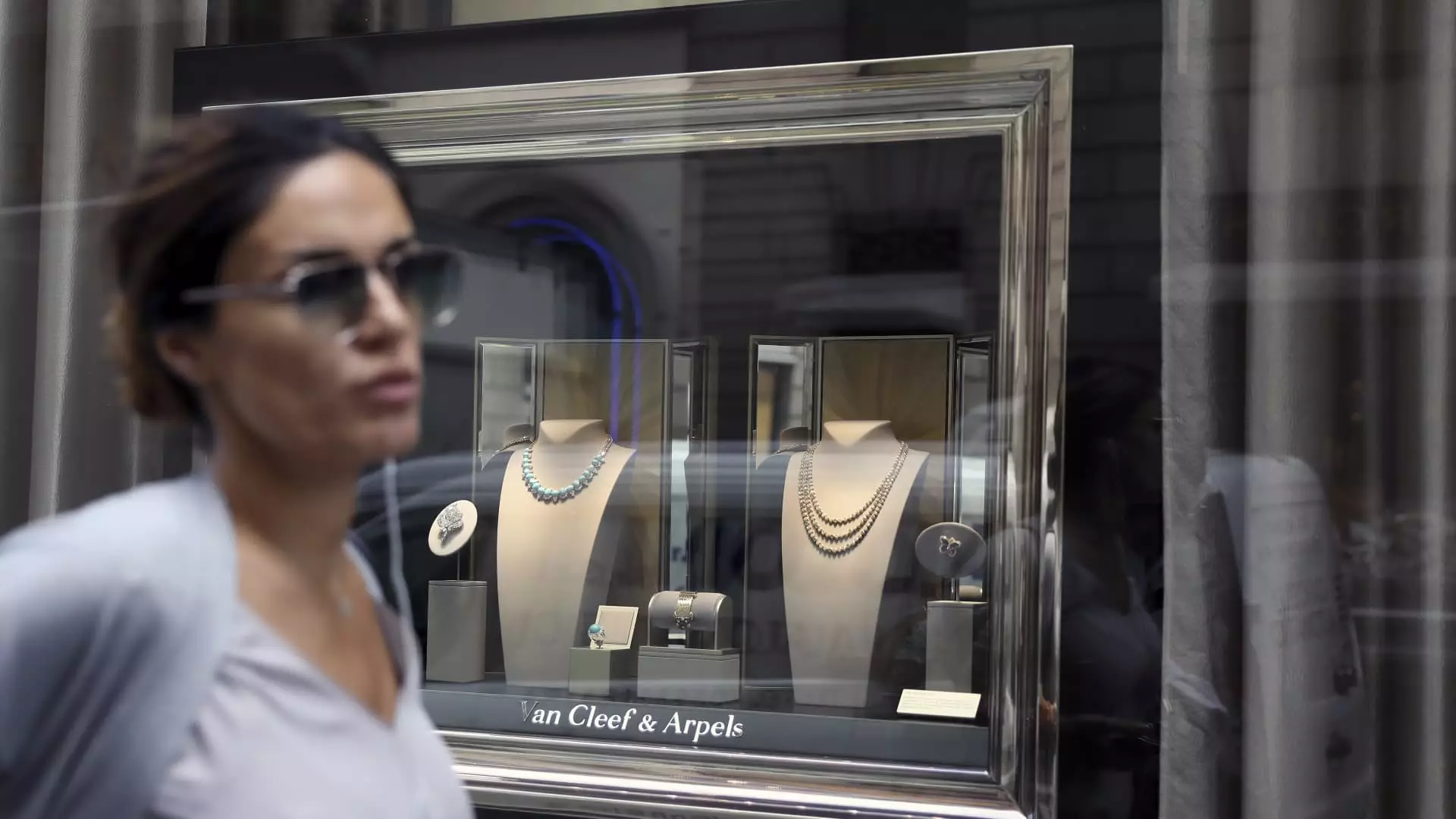In a world grappling with economic uncertainty and fluctuating consumer behavior, the luxury jewelry market remains a beacon of resilience and opulence. While the average shopper tightens their purse strings, the elite class continues to indulge in extravagant adornments—diamond-encrusted rings and rare gemstone necklaces that evoke admiration and status. Yet, this isn’t merely about showcasing wealth; it’s about elite branding and exclusivity in an age when even the super-rich are becoming curators of their collections. Jewelry from well-established names like Richemont has become synonymous with desirability and prestige, setting it miles apart from the mass-produced alternatives that flood the market.
Richemont’s Triumphs and Turbulence
Richemont, with its unrivaled suite of prestigious brands—think Van Cleef & Arpels, Buccellati, and Cartier—has reported an impressive uptick in sales, forging its path as a leader in the luxury jewelry segment. The financial results announced recently reflect an 11% growth in the Jewelry Maisons division, indicating a robust appetite for high-quality, high-value items among consumers who still have the means to splurge. This is especially crucial in a climate where competitors like LVMH display stagnation in their jewelry and watch sectors. Richemont’s chairman, Johann Rupert, boldly states that the company is capturing market share from both branded and non-branded entities, a testament to Richemont’s elite status and its ability to adapt to shifting market dynamics.
However, the success of Richemont’s jewelry arms doesn’t drown out the more muted performance of its other segments, particularly watches. In stark contrast to its jewelry triumphs, Richemont’s watch sales declined by 13% in 2024, with a notable fallout attributed to weaker demand in China. The complexities of the luxury watch market—where purchases are often viewed as long-term investments—entail longer recovery timelines. In fact, the shifting consumer focus due to COVID-19, where individuals splurged on watches, has created an oversaturated market that is struggling to sift through existing inventories.
The Landscape of Luxury: Changing Dynamics
The current market turmoil presents an intriguing dichotomy. While luxury jewelry flourishes, it stands against the backdrop of an industry that grapples with inconsistencies. High-end fashion retailers and beloved heritage brands, once perceived as untouchable, are now stalling under pressure from economic headwinds. The changes are stark and indicative of broader shifts in consumer behavior. Jewelry has become more accessible in relative terms, and the impulse to buy has shifted in favor of adornments over handbags—an interesting pivot that reflects changing definitions of luxury.
As luxury brands attempt to navigate these uncharted waters, it’s crucial to consider their pricing strategies. Richemont’s commitment to sustainable pricing, as articulated by Rupert, stands in contrast to competitors weighing price increases that may not withstand economic scrutiny. An unwavering commitment to customer loyalty, personalization, and timeless elegance ensures that Richemont is well-poised to weather the storm.
The Macroeconomic Effects and Future Outlook
However, Richemont and other players in the luxury space cannot afford to ignore the looming threats posed by macroeconomic changes. The strength of the Swiss franc against the dollar, increasing gold prices, and tariffs can impose significant constraints on profitability and growth trajectories. This precarious balancing act leads one to wonder—will luxury consumers continue their penchant for high-end acquisitions in the face of such economic pressures, or will they pull back, causing a ripple effect throughout affluent markets?
Analysts remain divided on how these dynamics will play out. While the jewelry segment shows promising growth trends, emerging challenges could impact the broader landscape significantly. The ongoing volatility of global markets leaves much to be desired regarding predictability, making the jewelry market’s buoyancy appear almost paradoxical in contrast to its traditional counterparts.
Jewelry: A Reflection of Societal Values
Ultimately, the enduring appeal of luxury jewelry underscores a subtle yet profound societal shift—the fascination with physical symbols of wealth and status is far from waning. However, amidst economic fluctuations and shifting consumer behaviors, brands must remain vigilant as they strive to capture the hearts and wallets of the discerning elite. For many affluent consumers today, purchasing exquisite jewelry signifies not merely an acquisition of goods but an affirmation of identity and belonging. As the demand for opulence continues to thrive, it becomes evident that jewelry transcends mere decoration; it’s a tapestry woven with personal storytelling, cultural heritage, and society’s ever-evolving narrative of value.


Leave a Reply